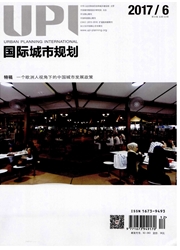

 中文摘要:
中文摘要:
构建低碳城市的意义与路径已有诸多的研究文献,本文聚焦于低碳城市空间形态方面的研究进展与规划策略,以期明晰规划师在构建低碳城市中所扮演的角色,并提供常用的技术手段。本文首先从适应性策略出发,讨论气候变化对城市的影响以及适应气候变化的城市规划策略,之后重点探讨了减缓性策略指引下的低碳城市空间形态及规划。基于现有研究文献,笔者总结了城市空间形态与碳排放总量和碳排放结构之间的关系,并在都市区和社区两个层面上探讨了低碳城市空间形态的概念框架与指标体系,提出了减缓气候变化的空间形态规划策略。文章结尾探讨了现有研究与规划实践给中国规划师带来的启示。
 英文摘要:
英文摘要:
Many studies have discussed the significance of low-carbon city development and the overall planning approach to building a low-carbon city. This paper provides a critical review of the research progress and planning strategies about the urban form of low-carbon cities in order to help urban planners better understanding the roles of spatial tools in building low-carbon cities. We start with adaptation strategies discussing impacts of climate change on cities and urban planning strategies that facilitate adaptation.Second, we focus on the urban form and planning of low-carbon cities guided by mitigation strategies. Based on the current literature, this paper discussed the relationship between the urban spatial form and the overall carbon emission. We then proposed a conceptual framework and an index system for a low-carbon urban form both at the urban level and the community level, followed by a proposal of mitigation-oriente planning strategies for building a low-carbon city. We conclude the paper with possible implications for Chinese urban planning practice.
 同期刊论文项目
同期刊论文项目
 同项目期刊论文
同项目期刊论文
 期刊信息
期刊信息
